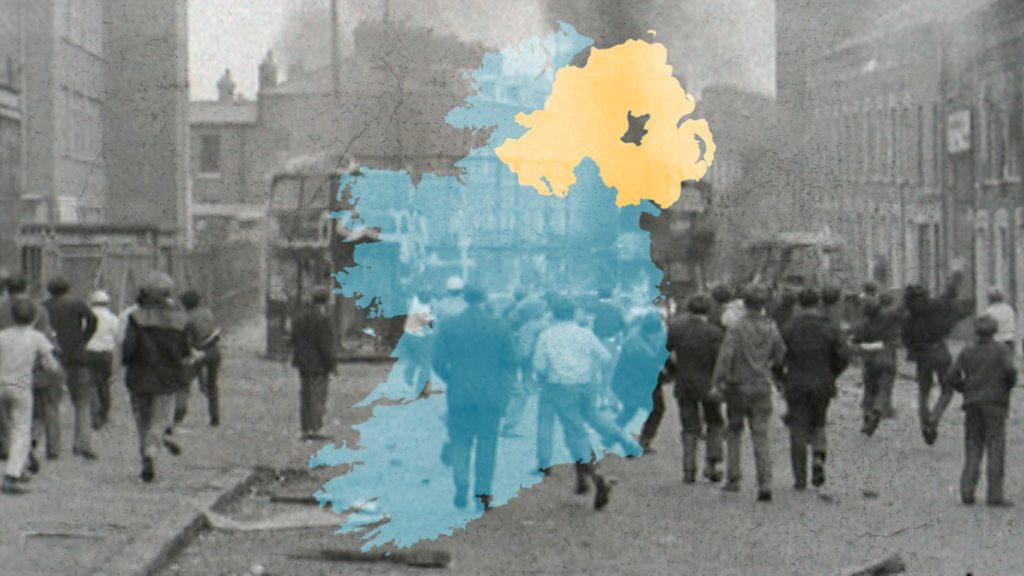Bloody Friday: What happened in Belfast on 21 July 1972?
- Published
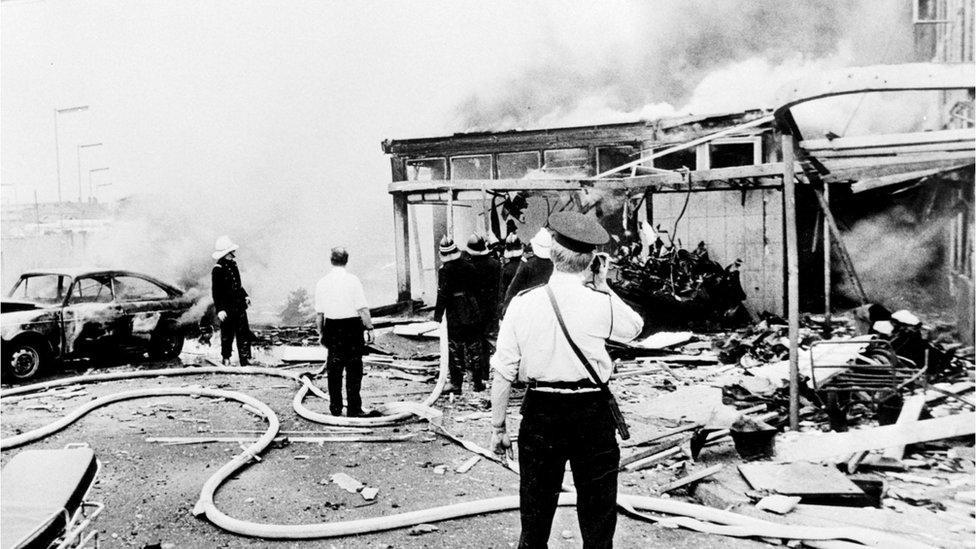
On Friday 21 July 1972, 19 Irish Republican Army (IRA) bombs exploded across Belfast in little over an hour on a warm afternoon.
Nine people were killed and 130 others were seriously injured in what became known as Bloody Friday, another horrific day in the Troubles.
What happened?
As the timed devices went off around the city starting shortly after 14:00 BST, flying glass and debris from the blasts caused extensive injuries to people caught in the open and fireballs caused horrific burns.
Security forces in the city were stretched to their limits with the subsequent chaos in the streets and hoax warnings about further bombs.
The scale of the attack was huge stretching from Botanic Avenue in the south of the city to Great Victoria Street in the city centre, the ferry terminus and Queen Elizabeth Bridge up to Salisbury Avenue in north Belfast,.
The nine people who were killed died in two of the 19 bombs.
Nine people died and 130 were injured when 19 bombs exploded across Belfast.
A car was driven into the rear of the Oxford Street bus station in the city centre, killing six people.
An explosion in a hijacked vehicle at shops on the Cavehill Road killed another three people.
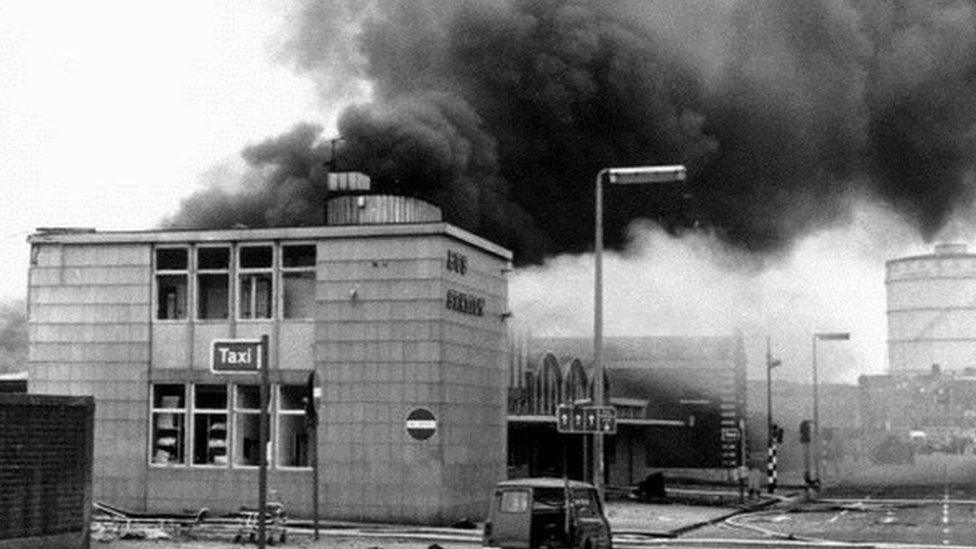
Smoke rises over Oxford Bus Station in Belfast on Bloody Friday
Of the nine people who died, seven were civilians and two were soldiers.
Among the injured were 77 women and girls, and 53 men and boys.
The victims came from both sides of the community.
The IRA had placed more bombs which were defused possibly saving more lives.
In the aftermath, the IRA attempted to blame security forces for failing to act on warnings.
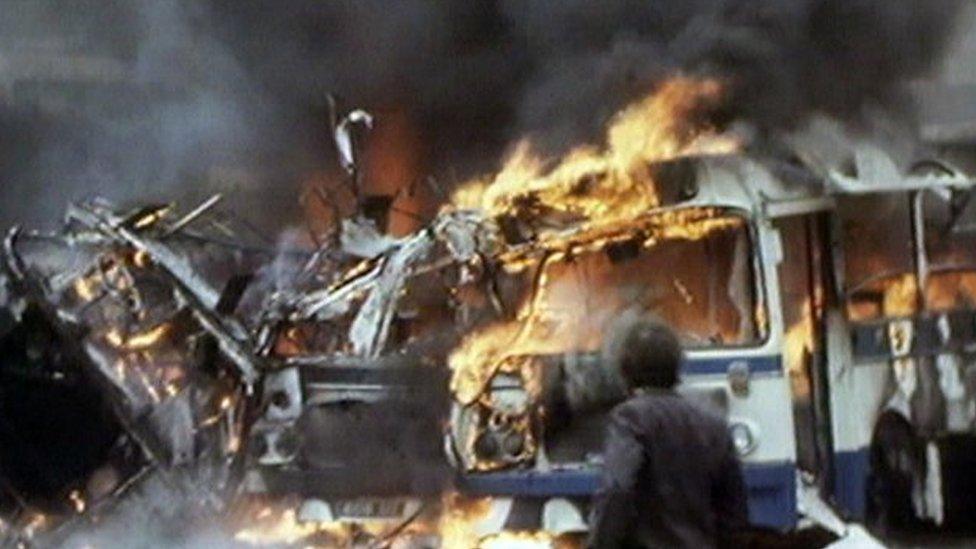
Aftermath of the explosion at Smithfield bus station
Who were the victims?
Stephen Cooper (19), member of the British Army
William Crothers (15), civilian
John Gibson (45), civilian
William Irvine (18), civilian
Thomas Killops (39), civilian
Brigid Murray (65), civilian
Margaret O'Hare (34), civilian
Stephen Parker (14), civilian
Philip Price (27), member of the British Army
What happened next?
July 1972 is often called the bloodiest month, of the bloodiest year of the Troubles.
By the time the first bomb in Belfast exploded on Bloody Friday, 59 people had already been killed across Northern Ireland that month.
News headlines from across Northern Ireland on the day said the attack was the worst the city had seen since the Blitz in 1941, with widespread condemnation from both sides of the community.
The Secretary of State for Northern Ireland at the time, William Whitelaw, told the House of Commons the bombings were "a wanton attack on innocent men, women and children".
In the 10 days after Bloody Friday, 18 more people were killed in Belfast.
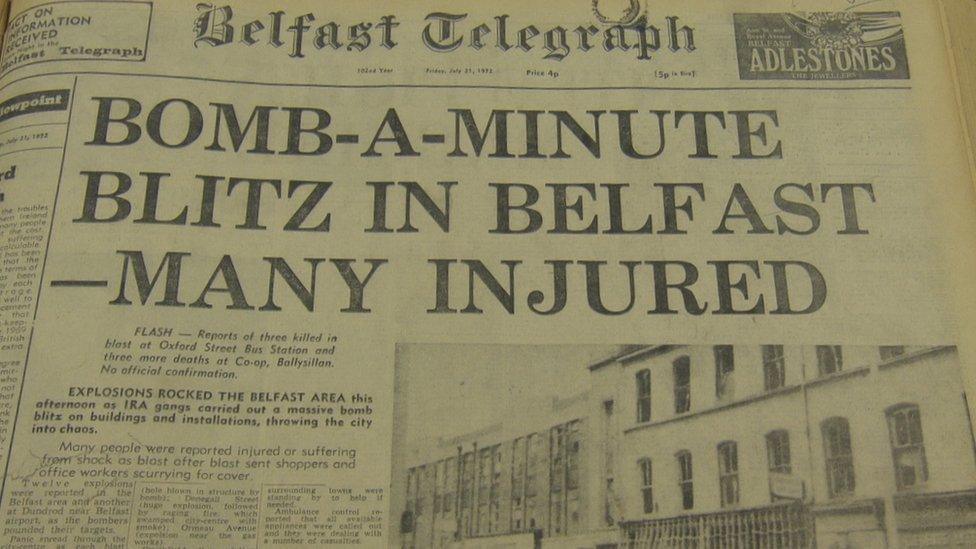
Then, at 04:00 on 31 July 1972 the Army launched Operation Motorman and moved in to clear "no go" areas set up by republican paramilitaries across Northern Ireland.
In Londonderry more than 1,000 soldiers in armoured vehicles moved into the Bogside and Creggan.
In Belfast, the Army set up watchtowers in Casement Park in the west of the city.
In all, about 4,000 extra troops were brought into Northern Ireland during the operation.
Two teenagers were shot and killed by the Army during the operation in Derry.
Nine people were also killed that day in an IRA bomb in Claudy, County Londonderry.
In later years, the IRA leader at the time, Sean MacStiofain, said the aim of the Bloody Friday attacks had been to cause financial damage - but he refused to accept responsibility.
Writing in 1996, Gerry Adams, the then Sinn Féin president, stated the IRA "made a mistake in putting out so many bombs".
He added that civilian fatalities were "a matter of deep regret".
In 2002, on the 30th anniversary of Bloody Friday, the IRA apologised to civilian victims of its campaign of violence, external.
In a statement in the republican newspaper An Phoblacht it said it offered "sincere apologies" to the families of those killed on Bloody Friday.
Related topics
- Published21 July 2022
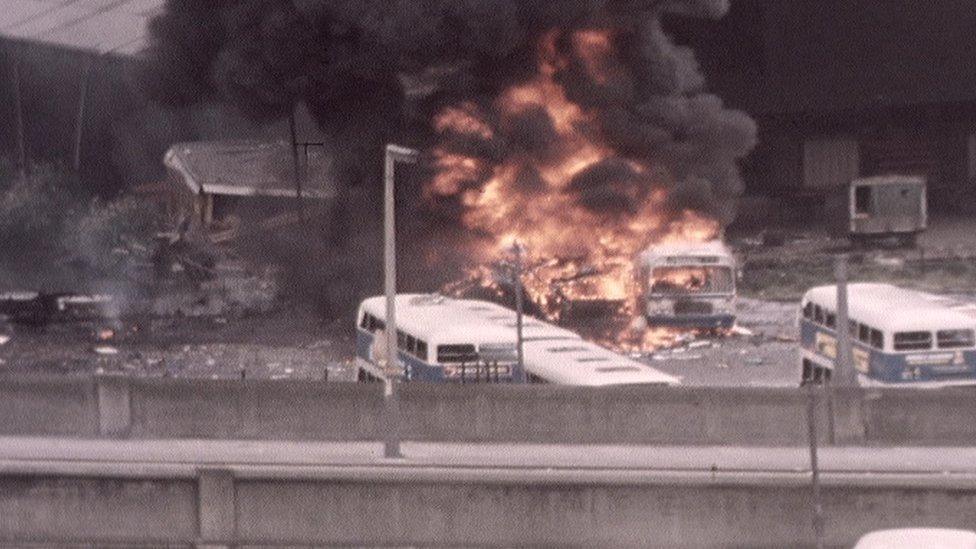
- Published18 February 2022

- Published20 July 2012
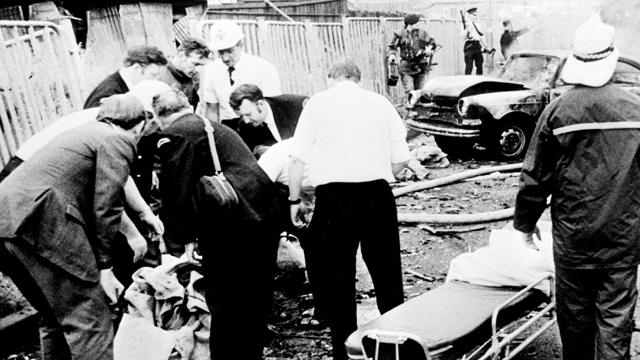
- Published13 August 2019
